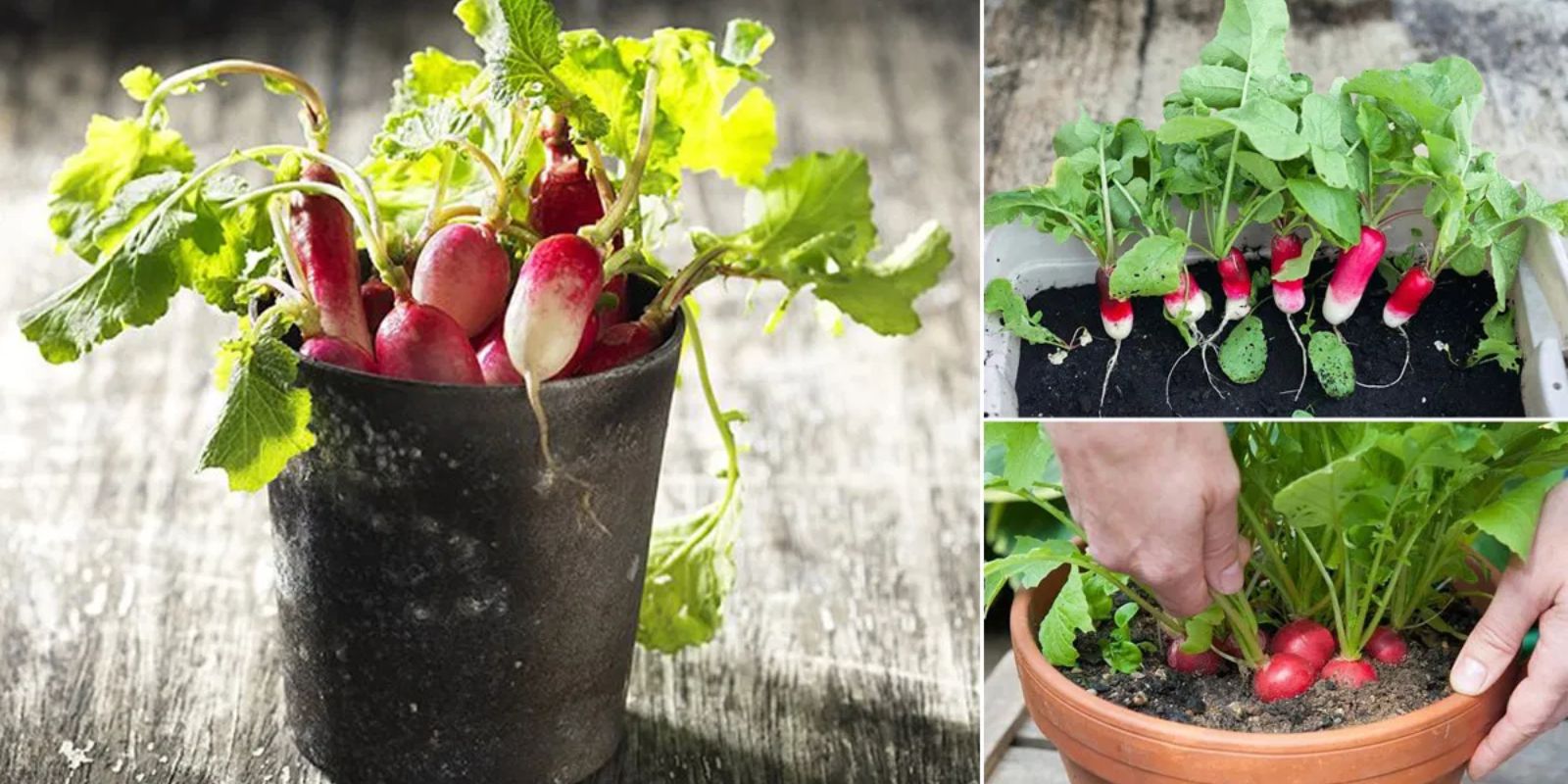Radishes are one of the easiest and fastest vegetables to grow, making them an excellent choice for beginners and seasoned gardeners alike. Their peppery crunch and vibrant color make them a delightful addition to salads, sandwiches, and even roasted dishes. Growing radishes in containers not only saves space but also allows you to control the growing environment for optimal taste and quality. In this guide, we’ll walk you through everything you need to know to grow the best-tasting radishes right at home.
Why Grow Radishes in Containers?
Container gardening is ideal for growing radishes because it:
- Saves Space: Perfect for small balconies, patios, or windowsills.
- Prevents Pests: Growing radishes in containers keeps them safe from many soil-borne pests and diseases.
- Offers Better Control: You can control the soil quality, watering schedule, and sunlight exposure more effectively.
- Provides Year-Round Options: With containers, you can move plants indoors or to warmer spots during colder months.
Getting Started
1. Choose the Right Container
The success of container-grown radishes begins with selecting the right container. Radishes don’t require much depth since their roots are relatively shallow. A container that’s 6–8 inches deep and wide enough to allow proper spacing is ideal. Ensure it has drainage holes to prevent waterlogging, which can cause root rot.
2. Select the Best Radish Varieties
Some radish varieties are better suited for container gardening. Here are a few top picks:
- Cherry Belle: A classic, fast-growing variety maturing in about 22–25 days.
- French Breakfast: Known for its oblong shape and mild flavor.
- Easter Egg Mix: Produces colorful radishes, perfect for adding visual appeal.
- Daikon: If you prefer larger radishes, daikon grows well in deeper containers.
Preparing the Container
3. Fill with Quality Soil
Radishes thrive in loose, well-draining soil. Use a high-quality potting mix enriched with compost or organic matter. Avoid heavy clay soils, which can inhibit root development and result in misshapen radishes.
4. Planting Seeds
- Fill the container with soil, leaving about an inch of space at the top.
- Sow radish seeds ½ inch deep, spaced 1 inch apart.
- Cover lightly with soil and water gently to settle the seeds.
Care and Maintenance
5. Watering Consistently
Radishes need consistent moisture to grow well. Water the container whenever the top inch of soil feels dry. Be careful not to overwater, as soggy soil can lead to cracked radishes or fungal issues.
6. Provide Adequate Sunlight
Radishes are sun-loving plants. Place the container in a spot that receives 6–8 hours of sunlight daily. If growing indoors, consider using a grow light to supplement natural light.
7. Thin the Seedlings
Once the seeds germinate (usually within 5–7 days), thin the seedlings to about 2 inches apart. This ensures that each radish has enough room to grow and develop properly.
8. Fertilize Sparingly
Radishes don’t require heavy fertilization. Too much nitrogen can lead to lush foliage but small, underdeveloped roots. If needed, use a balanced fertilizer or compost tea every two weeks.
Common Challenges and Solutions
Problem 1: Radishes Not Forming Bulbs
- Cause: Overcrowding or insufficient sunlight.
- Solution: Ensure proper spacing and provide at least 6 hours of direct sunlight daily.
Problem 2: Cracked or Bitter Radishes
- Cause: Irregular watering or harvesting too late.
- Solution: Water consistently and harvest radishes as soon as they mature.
Problem 3: Pests and Diseases
- Cause: Aphids, flea beetles, or fungal infections.
- Solution: Use neem oil spray for pests and avoid overwatering to prevent fungal growth.
Harvesting Radishes
Radishes are ready to harvest in about 20–30 days, depending on the variety. When the roots reach the desired size (usually 1–2 inches in diameter), gently pull them out of the soil. Avoid leaving them in the ground too long, as they can become woody and lose their flavor.
Tips for Better-Tasting Radishes
- Keep Soil Moist: Consistent watering helps radishes develop a crisp texture and mild flavor.
- Harvest Early: Younger radishes are sweeter and less woody.
- Add Mulch: Mulching around the container can help retain moisture and regulate soil temperature.
Creative Ways to Enjoy Radishes
Once you’ve harvested your radishes, there are countless ways to enjoy them:
- Fresh in Salads: Slice them thinly for a crunchy, peppery addition.
- Pickled: Preserve them in vinegar for a tangy snack.
- Roasted: Toss with olive oil and roast for a unique, mellow flavor.
- Radish Greens: Don’t discard the tops—they can be sautéed or added to soups!
Conclusion
Growing radishes in containers is an enjoyable and rewarding experience that provides fresh, flavorful produce in just a few weeks. With the right care and attention, you can harvest radishes that are crisp, delicious, and perfect for any dish.
What’s your favorite radish-growing tip or recipe? Share it in the comments and inspire others to grow their own crunchy delights! 🌟
#RadishLove #ContainerGardening #FreshHarvest #UrbanGardening #GardeningTips #GrowYourOwnFood #SustainableLiving

